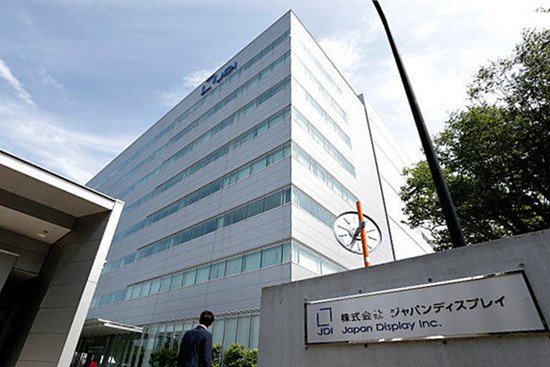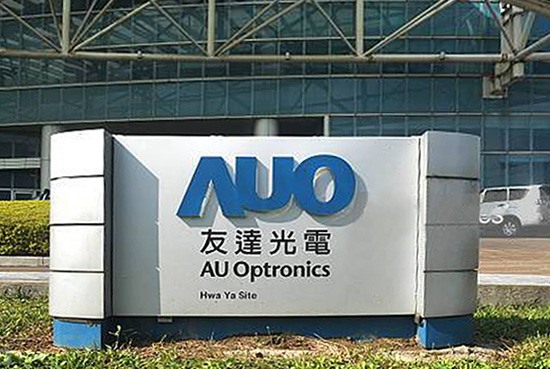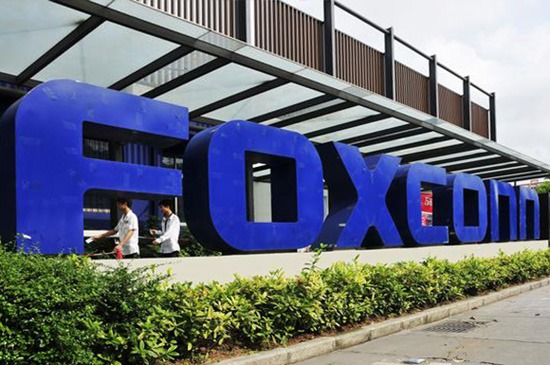Top 7 Smartphone Display Manufacturers
Today 99% of displays and other spare parts for smartphones, tablets, laptops, etc. are made in China. The PRC has succeeded in creating all necessary conditions for technological advance of an unthinkable scale. Logical enough, all most popular manufacturers of smartphones, as well as other consumer electronics & portable equipment have built factories in this country.
What’s more, several display manufacturing market leaders have built factories in Japan and Taiwan.
Just so you know, a lot of smartphone and tablet manufacturers don’t normally produce spare parts for their devices. A well-known example is Apple and its products; the company was actually buying displays from Samsung.
In this article, we’ll cross our t's to figure out who actually produces displays.
The first thing worth noting is a huge number of shadow (unregistered) factories that manufacture spare parts using obsolete equipment from well-known manufacturers. Machines are bought from official (registered) factories after the manufacturer discards them. As a result, entire lines for producing and assembling spare parts are created in basements. We surely won’t write about these manufacturers in detail, but you must remember that they also set the tone and have a big influence in the aftermarket.
Most modern manufacturers of devices and spare parts used to be engaged in a completely different business in the past. By the way, we have a great article about it for those interested in the history of famous brands.
Samsung

In the early ‘90s, Samsung was focusing on manufacturing telecommunication devices. During this period, its engineers created the first 40” LCD TV screen.
In fact, Samsung took on the LCD market as far back as 2002. Their produce range included matrices for mobile phones, home appliances, widescreen TVs, and digital information displays.
Display manufacturing was such a success that in 2012 it was made into a separate enterprise, Samsung Display, which had 6 full-scale factories. They were divided equally to work with OLED and LCD screens.
Samsung Chooses OLED
Samsung started developing OLED displays in the late ‘90s. Interestingly enough, LG and SONY were also working on this technology at that time. However, they failed to make progress in this area, whereas Samsung had registered about 600 patents on OLED and AMOLED display development by the end of 2006.
Initially, OLED displays were used for TV sets. A few years later, developers were able to improve the AMOLED technology and began to use it en masse in smartphone production. In 2011, Super AMOLED appeared, another successful and well-known product. Note that a Super AMOLED display has no air gap (in contrast to a regular AMOLED). This upgrade has reduced the screen thickness.
Today, display manufacturing is one of priorities for the Samsung Company. For example, they sold its LCD manufacturing equipment from the LCD factory and reequipped the factory to be an AMOLED manufacturer.
However, the company decided not to abandon the LCD production altogether. It keeps manufacturing LCD screens for phones, TVs, computer monitors and other equipment.
In 2018, the Korean corporation took up 97% of the market of AMOLED display production. Developing and manufacturing organic light-emitting diode displays are a priority for the company. Samsung AMOLED displays will apparently be a market leader in smartphone manufacturing over the next few years.
LG

LG Electronics was founded in 1958. It was only in 1987, however, that they began to deal with electronics and TFT technologies. They also started working with LCDs after setting up a joint venture with Philips, that is, LG Philips LCD. In 2001, LG ranked first in the sales of LCDs (over 4 million units sold). Developers were able to improve the IPS technology and created Super IPS, which significantly enhanced the LCD quality. Until 2003, the company was the market leader in display production.
LG also engaged in OLED and AMOLED display manufacturing. However, compared to Samsung, their market share was very small, even though about 5,000 matrices came off the production line daily.
Today, LG keeps working on the market of display manufacturing. These are mainly OLED displays. Even Apple is among their customers. Also, the SONY Company has widened cooperation with LG and will use flexible OLEDs supplied by LG Display for their smartphones.
They also collaborate with Lufthansa Technik on OLED display production. Soon their products will be used in aircrafts.
Tianma

Tianma is a Chinese manufacturer that has been on the display production market since 1983. You may ask why we still don’t know that much about them. The fact is that they only manufactured products for the domestic market until recently. These were mainly LCDs for industrial applications. However, the market has the upper hand and the company had to turn to producing displays for mobile devices. Now it is one of the largest matrix manufacturers on the Chinese market.
At present, Tianma deals mainly with the LCD production. Their product range includes displays for both smartphones and tablets, and there are many well-known brands among their customers, including Xiaomi and HTC.
Japan Display Inc.

This Japanese company was started in 2011 after the merge of Sony, Hitachi, Toshiba, and INCJ display production divisions.
JDI manufactures LCD high-resolution displays for smartphones and tablets. Please note that the Apple Company used products of this particular company for bestselling iPhone models.
Today Japan Display Inc. owns three large display factories. They are located in China, Taiwan and the Philippines.
They produce displays of different sizes: from small 5" smartphone displays to large 6" displays for tablets.
To keep up with the fashions, JDI teamed up with Sony and Panasonic and launched the production of OLED displays. At present, this company is one of the main competitors of Samsung Company on the AMOLED display market.
AU Optronics

This Taiwanese company was founded in 2001 by merging Benq and Acer display production divisions. In 2006, they acquired the Quanta Company, which dealt with manufacturing displays as well. The company has been hard at work developing and improving AMOLED, OLED and LCD technologies. AUO is quite advanced and is focused on developing technologies for flexible and frameless screens. In addition, they produce displays for other companies’ products under the contract.
All these factors allowed AUO to win the third place among OLED manufacturers (with Samsung and LG coming first and second respectively).
Sharp

Sharp, a well-known Japanese company, began developing LCDs back in 1988. Their production process is basically manufacturing TV displays. As far as smartphone displays are concerned, Sharp only produces them for their own phones. They also make some spare parts, which are used to assemble displays in other companies. At one time, Sharp produced LCDs for iPhones, iPads and MacBooks. Starting with 2019, Apple is allegedly planning to use Sharp's OLED displays for their smartphones.
Foxconn

Foxconn began as a small company, Hon Hai Plastics Corporation, engaged in manufacturing plastic parts for TVs. In the late ‘70s, the US and European companies started moving the manufacturing facilities to Asia (both equipment and spare parts). At this time, the company became a subcontractor for the production of computer spare parts.
Then In 1981, Hon Hai was renamed into Foxconn and started producing connectors for computer equipment, and then computer cables. In late ‘80s, Foxconn was already manufacturing parts for most of the world's computer manufacturers.
Today, a number of world-known brands are among their customers: Apple, Xiaomi, OnePlus, Huawei, HMD Global, Sony, Kindle, Intel, Cisco, Xbox 360 for Microsoft to name a few. What’s more, Foxconn has always been famous for its privacy policy. There were almost no information leaks regarding the devices produced at their factories. There were several unpleasant situations, but executive managers were always prompt to respond and found a solution fast.
In the early 2000s, Foxconn became one of Apple’s main partners. During this period, almost all iMac, iPhone, iPad and other products were manufactured at their factory. In 2016, Foxconn bought a 66% stake of Sharp, a Japanese company.
If speaking about displays only, Foxconn has one of the largest lines for assembling display modules. However, the company is not engaged in improving or developing new technologies.
Nine of its factories are located in China. Also, there are company factories in Brazil, Mexico, USA, Turkey, Czech Republic and other countries.
Other manufacturers
In this article, we mentioned only the most famous manufacturers. Their products have been popular on the market for many years and have earned the trust of global brands.
Still, don’t forget that the Chinese are best in creating replicas (copies) of all product kinds and types. This is also true for displays. Sometimes these “jacks of all trades” make copies that are hardly distinguishable from original products (even original product manufacturers have difficulty telling the difference). However, their price will be significantly lower. Yet, the choice is always left to the client.
Also, remember about a large number of manufacturers (mainly in China) that assemble displays using outdated equipment. Their share in the market must not be underestimated. These products are of a rather low quality. A fuzzy picture, poor viewing angles, a noticeable pixel grid, and uneven backlighting indicate that such a display never went through the QA control, and it is likely to have been assembled in a basement or a garage using primitive tools. LCDs fall into the risk group, because this production technology has been on the market for a long time, so everybody knows it well and learned to manufacture LCDs. You can find such screens only in cheap smartphones of no-name obscure brands.
Our site offers a huge number of displays: from budget-friendly copies to expensive originals. Our site offers a huge number of displays: from budget-friendly copies / replicas to expensive originals. The ALL SPARES team is constantly working on expanding and improving the range of products. You can always find a spare part with the best price-quality ratio at our store.
Recently, we have visited production facilities at one of our suppliers’ factory and filmed a video showing the line for assembling display modules. Note that all products are manufactured in special insulated boxes using robotic technology. Due to this, the human error factor is reduced to a minimum. You can buy such displays in our store.
